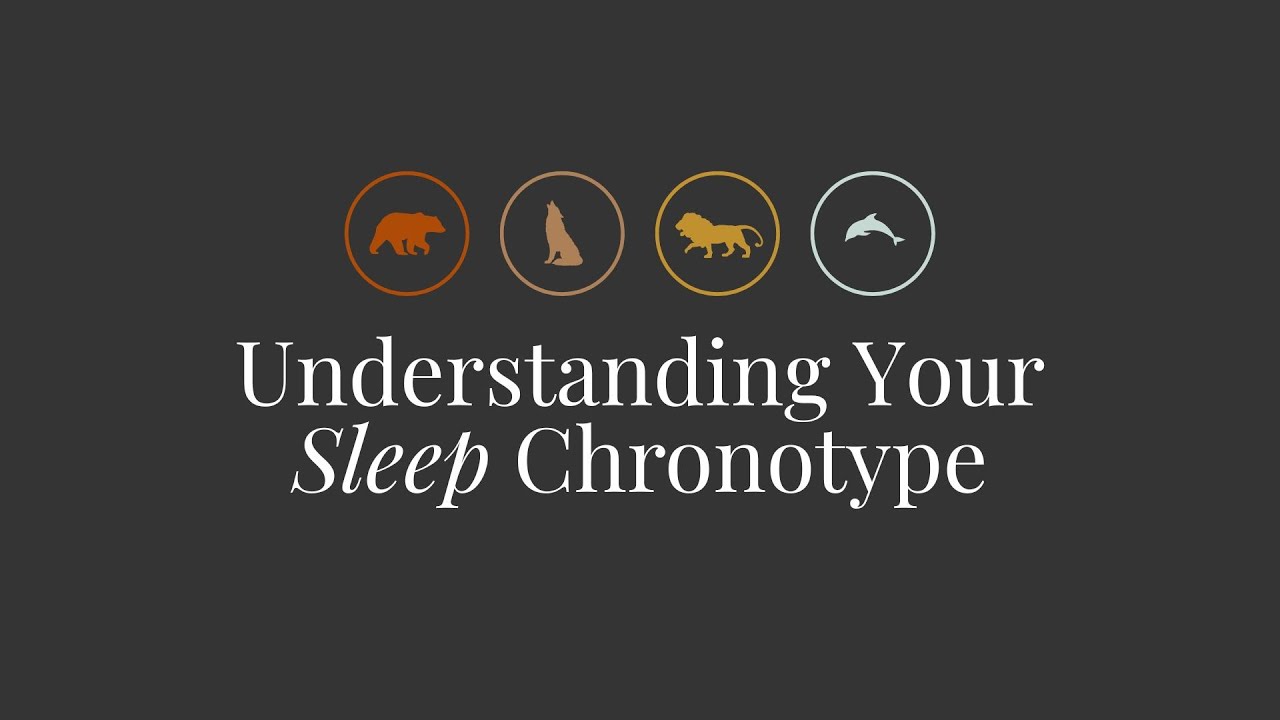Sleep chronotypes are individuals’ natural preferences regarding sleep schedules and patterns. These biological clocks, also known as circadian rhythms, determine the time of day an individual feels most awake and alert and when they feel the most tired.
The two most common sleep chronotypes are night owls and early birds. Night owls, also called evening types, tend to go to bed late and wake up late, with their peak energy levels occurring during the evening. In contrast, early birds, or morning types, generally go to bed early and wake up early, experiencing their highest energy levels during the morning hours.
Table of Contents
It is important to note that an individual’s sleep chronotype can change throughout life. Age, lifestyle, and environmental changes can lead to shifts in one’s chronotype. For instance, adolescents and young adults tend to lean more towards the night owl chronotype, while older adults are more likely to be early birds.
Chronotype and Sleep Patterns
Circadian rhythm is crucial in determining an individual’s sleep patterns. This internal clock operates on a roughly 24-hour cycle and regulates various physiological processes, such as body temperature, hormone production, and sleep-wake cycles. The circadian rhythm is influenced by external cues, such as light and temperature, and can be affected by genetic factors, which determine an individual’s inherent sleep preferences and tendencies.
Lifestyle, habits, and behaviours also significantly impact sleep patterns and chronotype. For example, exposure to artificial light during the evening, caffeine consumption, and irregular sleep schedules can disrupt an individual’s natural circadian rhythm, leading to sleep disturbances and shifts in their chronotype.
Circadian Rhythm vs Chronotype
Circadian rhythm and chronotype are two concepts that are closely tied to our sleep patterns and biological functions. They form an integral part of the complex system that governs our daily cycles of sleep and wakefulness, amongst other things.
| Circadian Rhythm | Chronotype | |
| Definition | A natural, internal process that regulates the sleep-wake cycle and occurs approximately once every 24 hours. It can refer to any biological process exhibiting 24-hour endogenous, entrainable oscillation, such as sleeping and feeding patterns, hormone production, cell regeneration, and other biological activities. | The behavioural manifestation of underlying circadian rhythms of myriad physical processes. Chronotypes can be categorized broadly into “morning” types (early to bed and early to rise), “evening” types (late to bed and late to rise), and “intermediate” types (in between the two extremes). |
| Factors Influencing | Exposure to light, meal times, social activities, and other environmental cues can influence our circadian rhythms. | Genetic factors, age, and social influences such as work schedules and societal expectations influence Chronotype. |
| Role in Health | Disruptions in circadian rhythms can lead to sleep disorders, obesity, diabetes, depression, bipolar disorder, and seasonal affective disorder. | Chronotype mismatches can lead to sleep deprivation, increased stress, and risk of various physical and mental health problems, including heart disease, diabetes, and mood disorders. |
Understanding our circadian rhythm and chronotype can help us live healthier lives by aligning our daily activities with our body’s natural patterns. It promotes better sleep and productivity and reduces the risk of numerous health issues disrupting these natural cycles.
Animal Chronotype Representations
The night owl and early bird chronotypes are significant because they represent humans’ two most common sleep patterns. These terms help individuals understand their natural sleep preferences, allowing them to make informed decisions about daily schedules and activities to optimize their performance and well-being.
Michael Breus, a sleep expert and clinical psychologist, expanded on the concept of sleep chronotypes by introducing four additional animal representations, each with distinct characteristics:
- Bear
Represents 50% of the population. Bears wake with the sun, peak alertness mid-morning, and have an energy dip in the afternoon.
- Dolphin
Dolphins have an erratic sleep and often deal with insomnia. Despite this, they are often highly intelligent and productive during alert periods.
- Lion
Early risers are known for productivity in the morning. Lions prefer early tasks and experience an afternoon energy drop.
- Wolf
The night owls among Breus’ chronotypes. Wolves are most creative and productive at night and prefer late sleep and wake times.
Identifying Your Chronotype
Identifying your chronotype can offer insight into your personal preferences and daily performance. Understanding whether you’re a morning person (early bird or “lion”), an evening person (night owl or “wolf”), or somewhere in between (like a “bear”) can help you schedule your day for peak productivity. To ascertain your chronotype, observe your natural sleep and wake times, your energy peaks and dips during the day, and when you’re most focused and creative.
| Early Bird | Night Owl | |
| Sleep-Wake Cycle | Early birds, also known as larks, and typically wake up early in the morning and go to bed early in the evening. Their peak alertness usually occurs in the early morning. | Night owls are naturally inclined towards staying up late and waking up later. Their peak alertness is often late in the evening. |
| Productivity | Early birds are generally the most productive in the morning. The may struggle to stay alert and productive in the late evening. | Night owls typically find their productivity peaks in the late afternoon and evening. They may struggle with being alert and productive in the early morning. |
| Social Patterns | Early birds often align better with traditional work schedules and social activities earlier in the day. | Night owls may find social and work activities challenging that occur early in the day. However, they may thrive in contexts that favour late-night activities. |
| Health Implications | Early birds tend to have a lower risk for insomnia and sleep disorders but may struggle with evening social activities or shift work. | Night owls may thrive on late-night productivity, but they can face health challenges due to societal norms favouring morning activities, potentially leading to chronic sleep deprivation. |
| Predominant Chronotype in Society | Early birds are more prevalent among adults, especially older adults. | Night owl tendencies are more common among adolescents and young adults, though many continue this pattern into adulthood. |
Tailoring a Sleep Routine Based on Your Chronotype
Gradual adjustments to your sleep schedule can make it easier for your body to adapt and respond positively. Such progressive modifications can be less disruptive to your existing routine while effectively guiding your body towards the desired sleep schedule.
Sleep Tips for Morning Chronotypes:
- Maintain consistent sleep and wake times to rise early in sync with your natural rhythm.
- Make the most of your peak productivity times in the morning.
- Limit exposure to bright lights, including screens, in the evening to aid your body in preparing for sleep.
- Avoid caffeine and stimulants in the afternoon and evening to ensure they don’t disrupt your earlier sleep time.
- Create a calming evening routine that can help signal your body that it’s time to wind down and prepare for sleep.
Sleep Tips for Evening Chronotypes:
- Allow yourself to follow a later sleep schedule to align with your natural tendencies.
- Utilize your peak productivity hours in the evening.
- Expose yourself to bright light in the morning to help adjust your body to an earlier start if necessary.
- Use blackout curtains or an eye mask to facilitate sleep if daylight interferes with your later sleep schedule.
- Maintain a consistent wake-up time, even if you go to bed late, to help regulate your sleep cycle.
Activities to Avoid Before Bedtime
Your pre-sleep routine plays a crucial role in determining the quality and duration of your sleep. There are several activities that you should ideally avoid before bedtime to ensure a restful night:
- Consumption of Caffeine and Alcohol
These substances can disrupt sleep patterns and impact sleep quality.
- High-Intensity Physical Activities
Vigorous workouts close to bedtime can leave you feeling overly energized, making it harder to fall asleep.
- Screen Time
The blue light from electronic devices can interfere with the production of the sleep hormone melatonin, thus disrupting sleep.
- Heavy Meals
Eating a large meal close to bedtime can cause discomfort and indigestion, impacting sleep.
- Stress-inducing Activities
Activities that raise stress levels can increase alertness and make sleep difficult.
Aligning Your Life with Your Natural Sleep Cycle
Understanding sleep chronotypes is essential for optimizing overall well-being and daily functioning. Identifying one’s natural sleep preferences and patterns can help individuals make informed decisions about their daily schedules, aligning their activities with peak energy levels and ensuring adequate rest. Ultimately, understanding and embracing one’s chronotype can enhance productivity, improve mental and physical health, and improve well-being.

